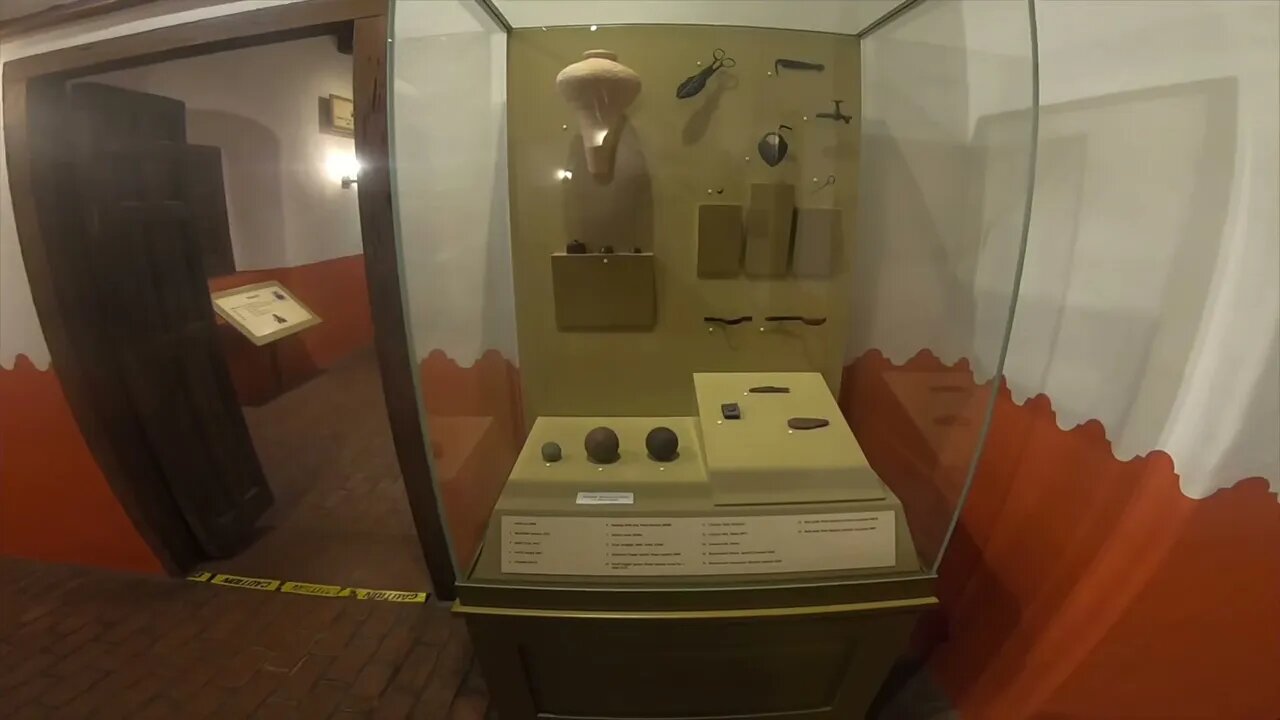Premium Only Content

Presidio La Bahia-The Other Fort that fell to Santa Anna Part 1
Founded as part of that colonial venture, Mission Nuestra Señora de la Bahía del Espíritu Santo de Zúñiga, often called Mission Espíritu Santo, was established by Franciscan priests in 1722 and was moved three times. Its final and current location is near Goliad, Texas. Now the mission is a part of Goliad State Park and Historic Site and is listed in the National Register of Historic Places. The history of the mission is exemplary of the geopolitical tensions in the region and the emergence of ranching culture in Texas.
Early history of the Gulf Coast
The area of the Gulf Coast, near what is today Houston, Texas, was once the land of the Karankawa-speaking people, about which very little is known today. Karankawa is a linguistic term —these groups shared a similar dialect during the mission period—and may not reflect political organization. Karankawa speaking people were composed of multiple, distinct hunter-gatherer groups. Álvar Núñez Cabeza de Vaca first encountered and lived among Karankawa speakers in 1528 after being shipwrecked on the Gulf Coast. A century and a half passed until the native peoples on the coast encountered other Europeans. The French, led by Robert le Cavelier, sieur de La Salle, established the small Fort Saint Louis settlement on the coast of Matagorda Bay in 1685, abandoning it after the local Karankawas attacked and destroyed it around 1689.
The Spanish built an outpost on top of the ill-fated French settlement in 1718. The fort constructed there in 1722 became Presidio La Bahia, which protected the Mission Espíritu Santo de Zúñiga. In the 18th century the mission system, which the Spanish Crown and private patrons interested in the region's natural resources subsidized, reached Texas. The system established missions that were both agricultural communities and social institutions designed to convert local peoples to Catholicism. Founding a mission required construction of a presidio and villa where soldiers, staff, and native peoples lived. Like the French settlement at Matagorda Bay, the Spanish fort and mission there did not last long, failing to grow crops and attract the local peoples to convert. As a result, the mission was moved in 1726 near what is today Victoria, Texas, where the Tamique and Aranama peoples lived. It lasted for 26 years, developing into a large cattle ranch and farm. The proximity to French Louisiana, French attempts to expand their trade and influence into areas claimed by Spain, and raiding by tribes like the Comanche continued to shape Spanish decisions in the area, and would influence the location of Espiritu Santo.
Mission Bahia
In 1749 Mission Espíritu Santo and Presidio Nuestra Señora de Loreto de Bahía were moved to what is now Goliad, Texas, one on each bank of the San Antonio River. The two settlements helped protect El Camino la Bahia, a major trade route to the north and east. The initial settlement buildings were jacals constructed of wattle-and-daub. Later more permanent stone structures were built including a convento and living area for the families at the mission, a granary, and a forge.
The native people living and working at the mission were from many groups, including the Aranama, Piguique, Manos de Perro, Tamique, Tawakoni, and Tonkawa. They chose to try life at the mission because the mission and presidio provided protection from raids. These people became adept horse riders and ranchers. Over time the mission became the one of the first large cattle ranches in the region. By 1788 the mission was growing a variety of crops and had over 15,000 head of cattle. The cattle herd may have reached 40,000 at its peak, with the incorporation of herds from other missions. The mission priests armed the native peoples living at Mission Espíritu Santo to defend against raiding Lipan Apache and Comanche groups. In the 1790s, the raids became more problematic. Raiding, desertion, and disease contributed to the native population decline at the mission in the late 18th century.
The low population resulted in the first order in 1794 to secularize, or place the land Mission Espíritu Santo owned into private ownership. The mission largely ignored the order until the period after Mexican Independence in 1821. The Franciscan friars still resisted and continued to minister to local settlers in spite of encroachments by Anglo settlers, the native people's abandonment of the site, and Apache and Comanche raiding. Far less prosperous by then, the Mission Espíritu Santo was fully secularized by 1830.
In the 1840s after Texas became a state, the mission fell into disrepair. Over the next couple decades the site and its outlying buildings were used for a variety of purposes. Residents of Goliad were permitted to take stones from the structures to reuse in new buildings, dismantling much of the original mission.
-
 LIVE
LIVE
The Dilley Show
34 minutes agoAmerica's Mayor, AG Pam Bondi and Q&A Friday! w/Author Brenden Dilley 11/22/2024
2,292 watching -
 1:00:50
1:00:50
The Dan Bongino Show
4 hours agoA Massive Shake Up On The Trump Transition (Ep. 2376) - 11/22/2024
286K693 -
 32:04
32:04
Stephen Gardner
16 hours ago🔥This Has GONE TOO FAR! Putin Begs Trump to intervene to avoid WW3!!
11.9K38 -
 DVR
DVR
Dr. Eric Berg
3 days agoThe Dr. Berg Show LIVE November 22, 2024
4.56K1 -
 55:10
55:10
The Rubin Report
1 hour agoPiers Morgan May Never Have This Guest on Again After This Fight
10.2K7 -
 56:35
56:35
Steven Crowder
2 hours agoLong-Distance Love, Choosing Your Church & Finding Out Your Dad is Gay | Tough Love w/ Guru Crowder
66.1K159 -
 LIVE
LIVE
Film Threat
2 hours agoGLADIATOR II + WICKED + TONS OF REVIEWS!!!!! | Film Threat Livecast
142 watching -
 LIVE
LIVE
The Big Mig™
11 hours agoGlobal Finance Forum Powered By Genesis Gold Group
1,501 watching -
 10:49
10:49
Resist the Mainstream
15 hours agoCollege Student With MAGA Hat Confronts Charlie Kirk — GETS SCHOOLED
21.2K21 -
 LIVE
LIVE
Caleb Hammer
1 hour agoI’m Done With Financial Audit
353 watching